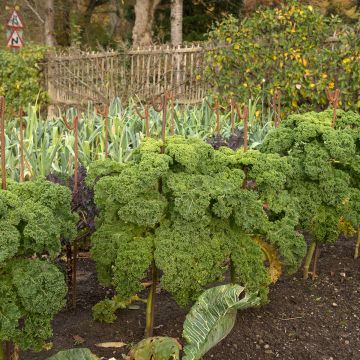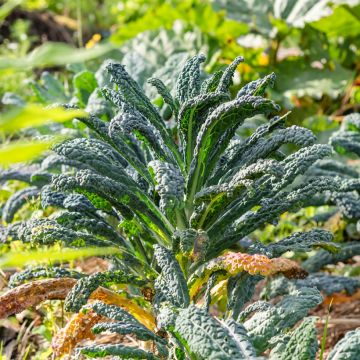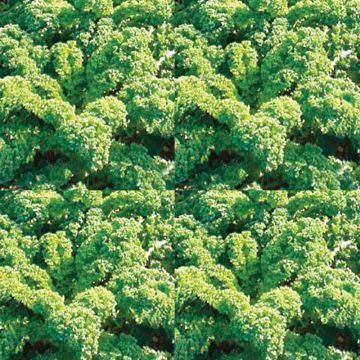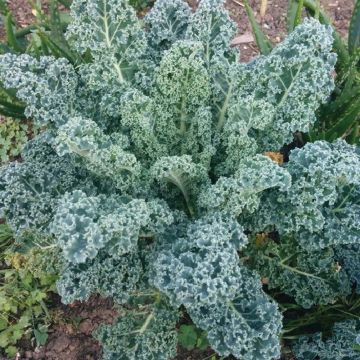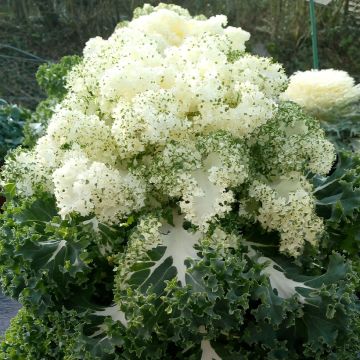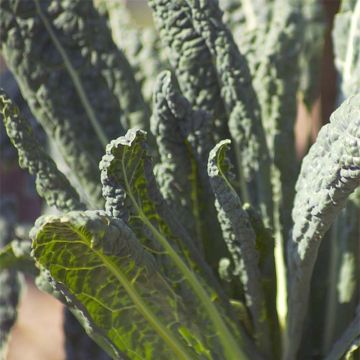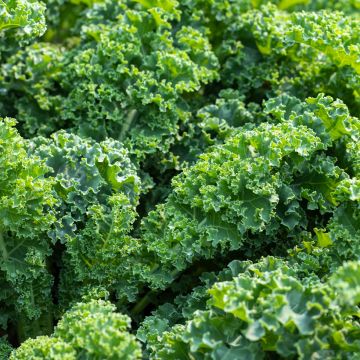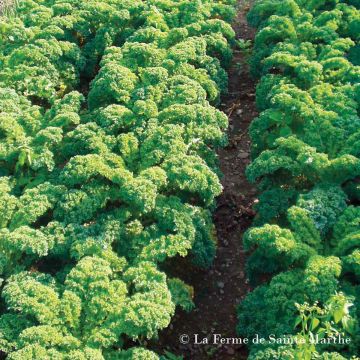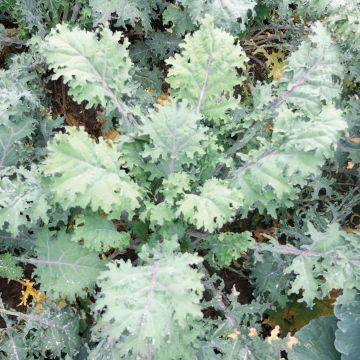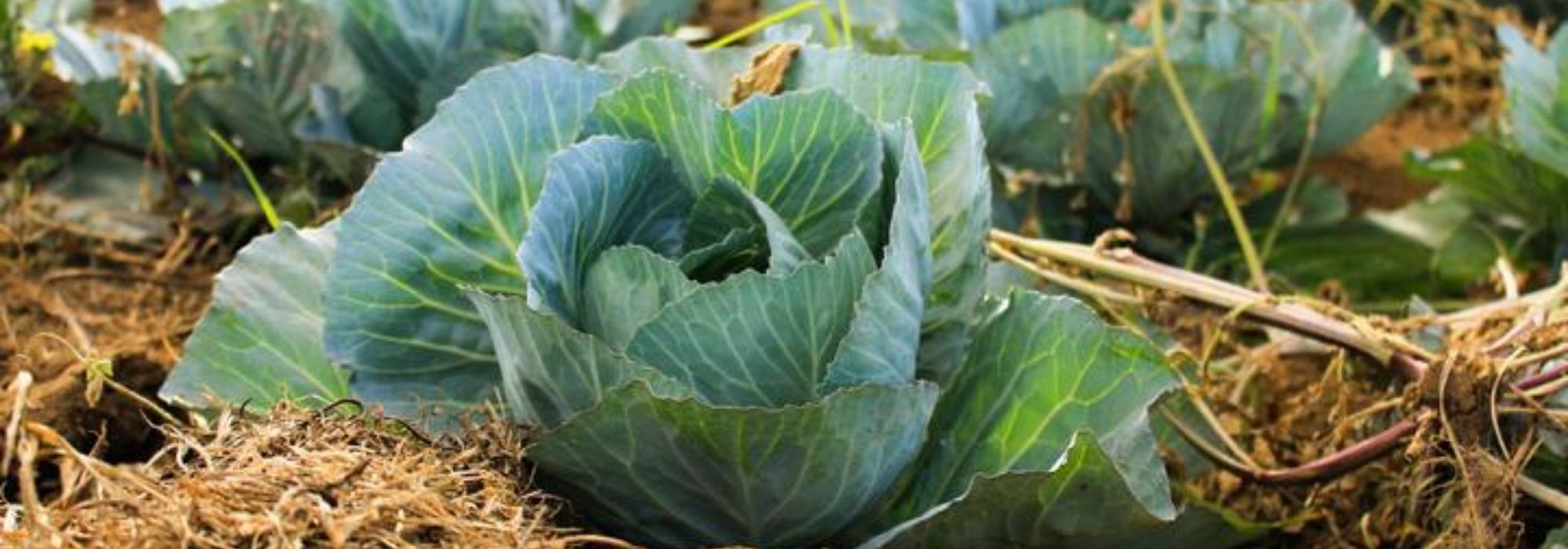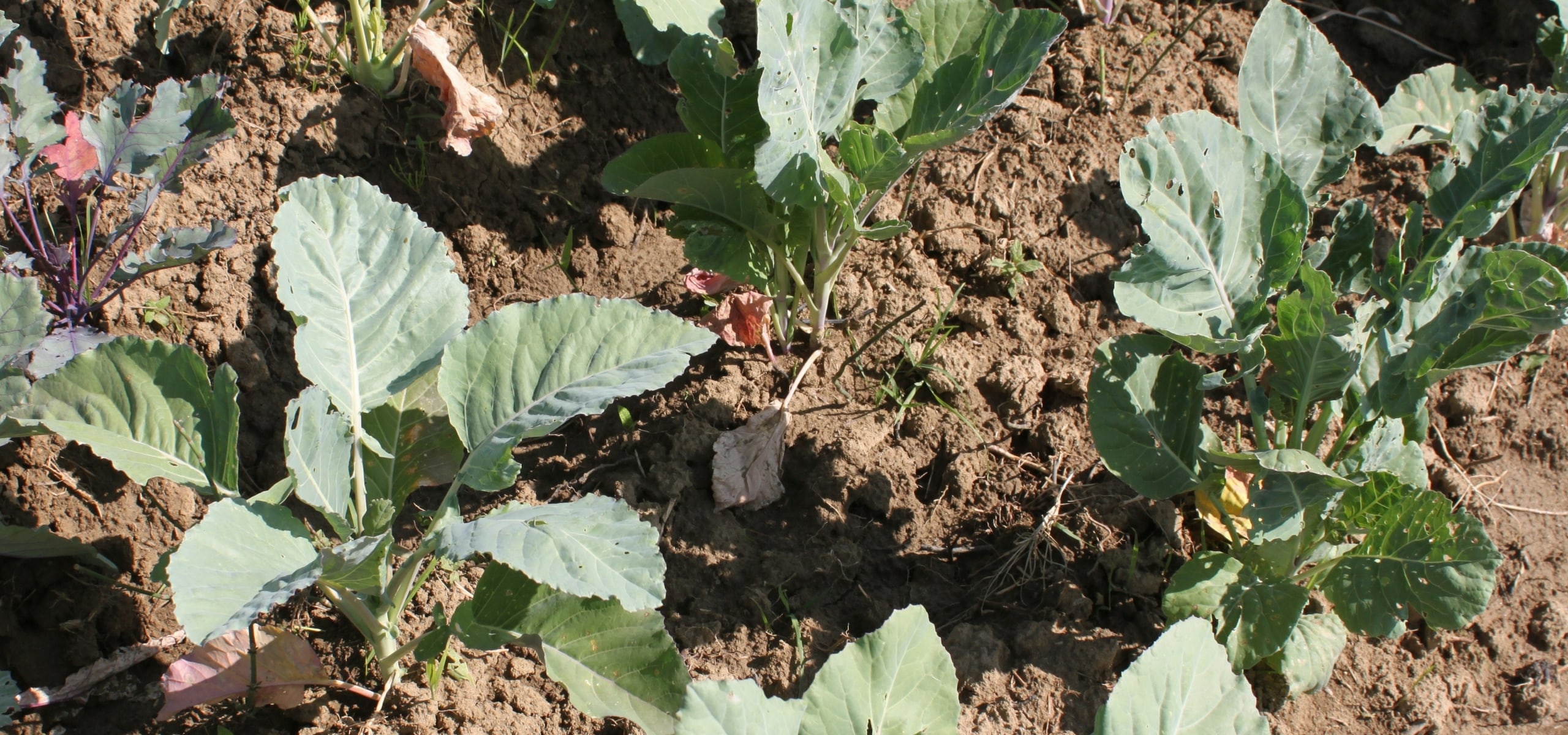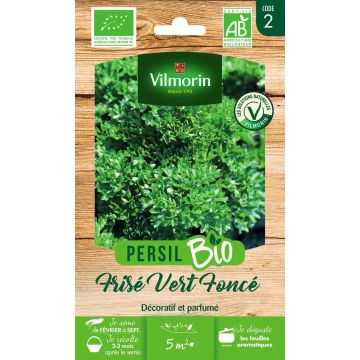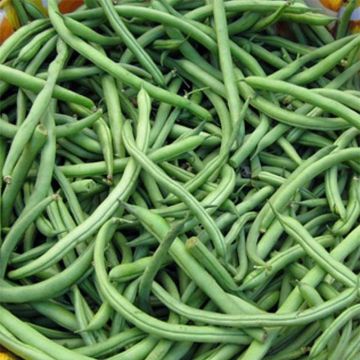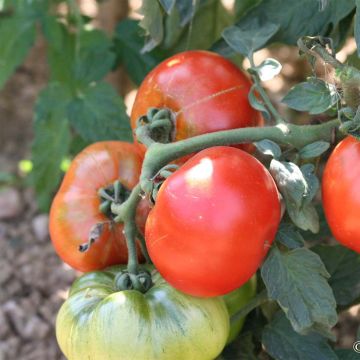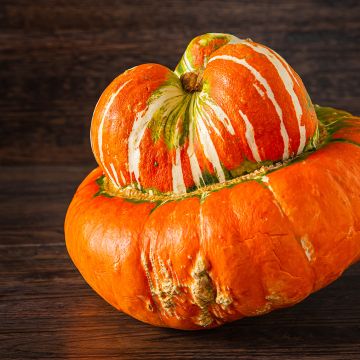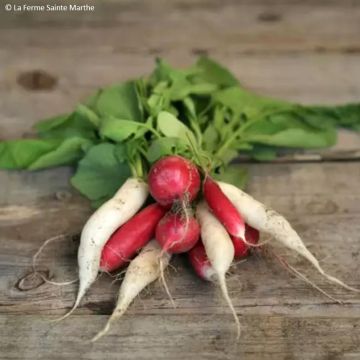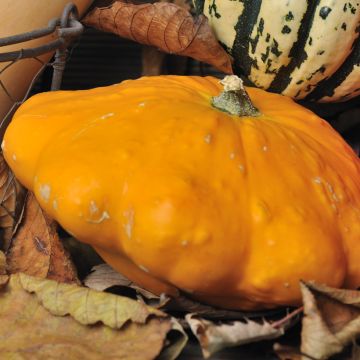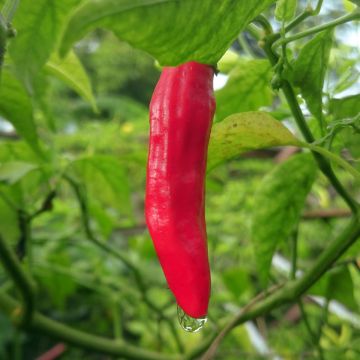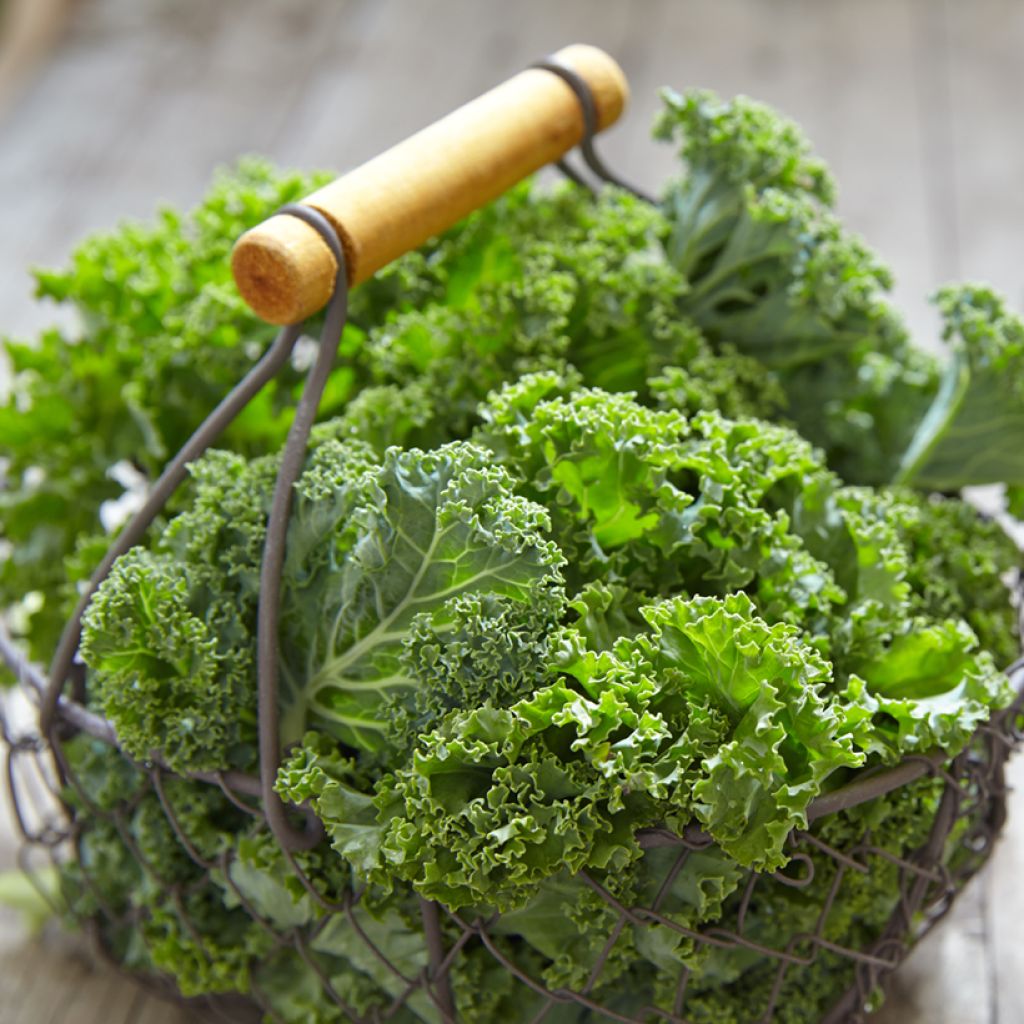

Starbor F1 Kale - Brassica oleracea acephala
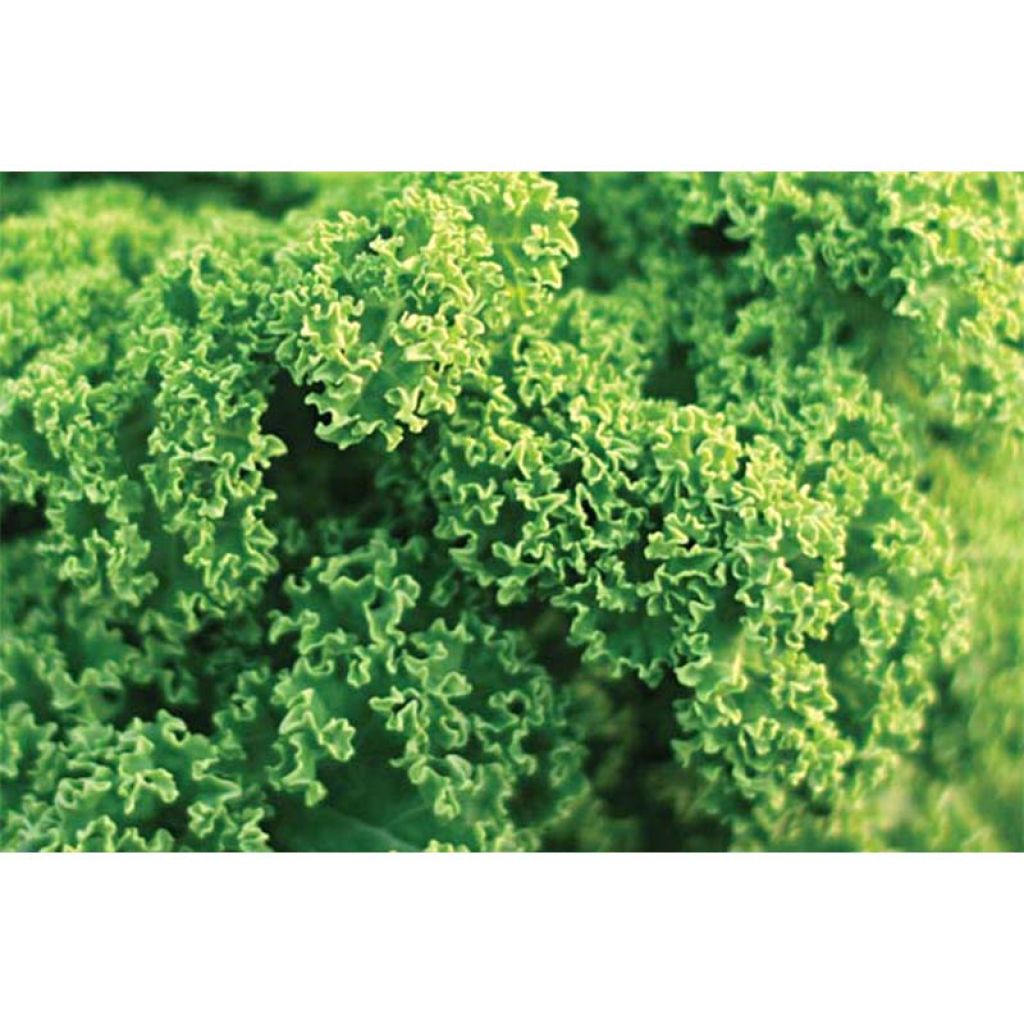

Starbor F1 Kale - Brassica oleracea acephala
Starbor F1 Kale - Brassica oleracea acephala
Brassica oleracea acephala Starbor F1
Kale
Received a package with crumbs of seeds. Managed to salvage only 12 seeds out of 25. Thankfully, they have produced very beautiful plants.
Martine, 13/09/2019
Special offer!
Receive a €20 voucher for any order over €90 (excluding delivery costs, credit notes, and plastic-free options)!
1- Add your favorite plants to your cart.
2- Once you have reached €90, confirm your order (you can even choose the delivery date!).
3- As soon as your order is shipped, you will receive an email containing your voucher code, valid for 3 months (90 days).
Your voucher is unique and can only be used once, for any order with a minimum value of €20, excluding delivery costs.
Can be combined with other current offers, non-divisible and non-refundable.
Why not try an alternative variety in stock?
View all →This plant carries a 6 months recovery warranty
More information
We guarantee the quality of our plants for a full growing cycle, and will replace at our expense any plant that fails to recover under normal climatic and planting conditions.

Description
The 'Starbor F1' Kale Cabbage is a superb, compact, hardy variety with curly, beautiful blue-green leaves. It is a tasty Kale that you can grow all year round, indoors on a windowsill or outdoors in the ground.
A favourite among Americans, Kale cabbage is an ancient green cabbage with exceptional nutritional value: it contains more vitamin C than an orange and more calcium than a glass of milk. Low in calories and rich in minerals, this cabbage, still relatively unknown in Europe, is gaining popularity in our kitchens.
Sometimes known as Borecole, Rabbit Cabbage or Cow Cabbage, this true nutritional phenomenon has tough, curly foliage that varies from green to dark red. It does not form a head like other cabbages. It belongs to the large Brassicaceae family (formerly Cruciferae) and has the Latin name Brassica oleracea acephala.
Once common on medieval tables but later relegated to animal feed, Kale has experienced a spectacular resurgence in the United States. It can be consumed raw in salads or quickly steamed and prepared in various ways: sautéed, in gratins, quiches, or mashed... This "Superfood" can also be incorporated into multiple preparations like fruit smoothies. And if you're lacking inspiration, several recipe books are dedicated solely to this unique cabbage.
Kale cabbage is easy to grow, requires little space, and has excellent hardiness (at least below -10 °C (14°F)). A-10 seems to be more resistant to potential pest attacks. However, it requires good fertilisation and regular moisture, like almost all cabbages.
NB: This variety is labeled F1 for "F1 labelled because it is a variety resulting from the cross-breeding of carefully selected parents to combine their qualities. This produces a variety that can be exceptionally flavourful and early while being resistant to diseases. Sometimes criticised or wrongly associated with GMOs, F1 hybrid seeds are attractive for their uniformity and resistance, but unfortunately, their qualities do not pass on to subsequent generations. Therefore, saving the seeds for future sowing will not be possible.
Harvest: It is done with a knife by removing the leaves from the outer part of the plant, which will continue to grow and produce new leaves. Kale can be harvested from the young leaf stage up to maturity.
Storage: This cabbage can be stored in the refrigerator for a few days, but since it would be a shame to miss out on its vitamins, we recommend consuming it soon after harvesting. It freezes well after being blanched for 3 minutes in salted boiling water.
Gardener's tip: To limit watering, starting from late May, we recommend mulching the soil with thin successive layers of grass clippings, ideally mixed with dead leaves. This protection helps keep the soil moist and also reduces weed growth.
Harvest
Plant habit
Foliage
Botanical data
Brassica
oleracea
acephala Starbor F1
Brassicaceae
Kale
Cultivar or hybrid
Annual
Other Kale seeds
View all →Planting and care
Sowing:
The germination temperature for 'Kale Starbor' F1 Cabbage ranges from 7 to 29°C (44.6 to 84.2°F) and takes 4 to 7 days.
This variety can be grown indoors year-round for a harvest at the "young shoots" stage, which occurs between 30 and 60 days after sowing, depending on the season.
For a traditional outdoor cultivation, sowing is done from March to June. You can sow directly in place or prepare seedlings that will then be planted in their final position in the garden.
Preparing Seedlings: Under a heated shelter, from late autumn to late winter or in a cold greenhouse or propagator in the garden for the rest of the year, sow the Kale seeds to a depth of 1 cm (0in) in a good seed compost. Lightly cover with compost or vermiculite. Don't forget to keep the substrate moist but not waterlogged!
When the young plants appear strong enough to handle, transplant them into pots if necessary and, for sowing under a heated shelter, gradually acclimatise them to cooler temperatures before transplanting them into the garden when there is no longer any risk of frost.
Direct Sowing: In properly amended and finely worked soil, make furrows about one centimetre deep, spaced 20/25 cm (8/10in) apart. Sow the seeds and cover them with a thin layer of fine soil. When the seedlings are well developed, thin them out, keeping only one plant every 60 cm (24in).
Cultivation:
Kale is grown in full sun or partial shade. It is a nutrient-demanding vegetable that requires well-rotted, nitrogen-rich and potassium-rich soil. Applying a generous amount of mature compost (about 3/4 kg per m2) is advisable by scratching the soil to a depth of 5 cm (2in), preferably in autumn after loosening the soil, as is done for all vegetable crops. It is not very tolerant of soil pH, which should be between 5.6 and 6.5. In acidic soil, it will be necessary to gradually raise the pH by adding calcium as dolomite or lime.
Kale is beneficial when planted alongside many vegetables such as tomatoes, lettuce... But avoid planting it next to other Brassicas and zucchini, fennel, lamb's lettuce, leeks, and strawberries.
Seedlings
Care
Intended location
Planting & care advice
-
, onOrder confirmed
Reply from on Promesse de fleurs
Similar products
Haven't found what you were looking for?
Hardiness is the lowest winter temperature a plant can endure without suffering serious damage or even dying. However, hardiness is affected by location (a sheltered area, such as a patio), protection (winter cover) and soil type (hardiness is improved by well-drained soil).

Photo Sharing Terms & Conditions
In order to encourage gardeners to interact and share their experiences, Promesse de fleurs offers various media enabling content to be uploaded onto its Site - in particular via the ‘Photo sharing’ module.
The User agrees to refrain from:
- Posting any content that is illegal, prejudicial, insulting, racist, inciteful to hatred, revisionist, contrary to public decency, that infringes on privacy or on the privacy rights of third parties, in particular the publicity rights of persons and goods, intellectual property rights, or the right to privacy.
- Submitting content on behalf of a third party;
- Impersonate the identity of a third party and/or publish any personal information about a third party;
In general, the User undertakes to refrain from any unethical behaviour.
All Content (in particular text, comments, files, images, photos, videos, creative works, etc.), which may be subject to property or intellectual property rights, image or other private rights, shall remain the property of the User, subject to the limited rights granted by the terms of the licence granted by Promesse de fleurs as stated below. Users are at liberty to publish or not to publish such Content on the Site, notably via the ‘Photo Sharing’ facility, and accept that this Content shall be made public and freely accessible, notably on the Internet.
Users further acknowledge, undertake to have ,and guarantee that they hold all necessary rights and permissions to publish such material on the Site, in particular with regard to the legislation in force pertaining to any privacy, property, intellectual property, image, or contractual rights, or rights of any other nature. By publishing such Content on the Site, Users acknowledge accepting full liability as publishers of the Content within the meaning of the law, and grant Promesse de fleurs, free of charge, an inclusive, worldwide licence for the said Content for the entire duration of its publication, including all reproduction, representation, up/downloading, displaying, performing, transmission, and storage rights.
Users also grant permission for their name to be linked to the Content and accept that this link may not always be made available.
By engaging in posting material, Users consent to their Content becoming automatically accessible on the Internet, in particular on other sites and/or blogs and/or web pages of the Promesse de fleurs site, including in particular social pages and the Promesse de fleurs catalogue.
Users may secure the removal of entrusted content free of charge by issuing a simple request via our contact form.
The flowering period indicated on our website applies to countries and regions located in USDA zone 8 (France, the United Kingdom, Ireland, the Netherlands, etc.)
It will vary according to where you live:
- In zones 9 to 10 (Italy, Spain, Greece, etc.), flowering will occur about 2 to 4 weeks earlier.
- In zones 6 to 7 (Germany, Poland, Slovenia, and lower mountainous regions), flowering will be delayed by 2 to 3 weeks.
- In zone 5 (Central Europe, Scandinavia), blooming will be delayed by 3 to 5 weeks.
In temperate climates, pruning of spring-flowering shrubs (forsythia, spireas, etc.) should be done just after flowering.
Pruning of summer-flowering shrubs (Indian Lilac, Perovskia, etc.) can be done in winter or spring.
In cold regions as well as with frost-sensitive plants, avoid pruning too early when severe frosts may still occur.
The planting period indicated on our website applies to countries and regions located in USDA zone 8 (France, United Kingdom, Ireland, Netherlands).
It will vary according to where you live:
- In Mediterranean zones (Marseille, Madrid, Milan, etc.), autumn and winter are the best planting periods.
- In continental zones (Strasbourg, Munich, Vienna, etc.), delay planting by 2 to 3 weeks in spring and bring it forward by 2 to 4 weeks in autumn.
- In mountainous regions (the Alps, Pyrenees, Carpathians, etc.), it is best to plant in late spring (May-June) or late summer (August-September).
The harvesting period indicated on our website applies to countries and regions in USDA zone 8 (France, England, Ireland, the Netherlands).
In colder areas (Scandinavia, Poland, Austria...) fruit and vegetable harvests are likely to be delayed by 3-4 weeks.
In warmer areas (Italy, Spain, Greece, etc.), harvesting will probably take place earlier, depending on weather conditions.
The sowing periods indicated on our website apply to countries and regions within USDA Zone 8 (France, UK, Ireland, Netherlands).
In colder areas (Scandinavia, Poland, Austria...), delay any outdoor sowing by 3-4 weeks, or sow under glass.
In warmer climes (Italy, Spain, Greece, etc.), bring outdoor sowing forward by a few weeks.






























